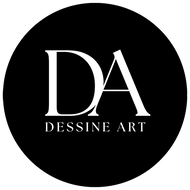Certain Ways To Know About Abstract Paintings You Can Add in Your Design
Great art can easily transform materials and defy expectations, giving a completely new life to mundane and forgotten objects. Some are artists that create wonders with their imagination, magic of hands and just pure talent, while the rest exist to appreciate and applaud the art created. Any form of art can give a completely different look to any corner of any space that it may occupy. Be it creating or appreciating a piece of art, we can say for sure that either way, art has a subtle and easy way of calming our souls and washing away the stress and chaos in our loves. No wonder art is used as a form of therapy!
A very common form of art is painting, it is something that people started right from the old stone age. Depictions of hunting scenes on cave walls being the most common ones. Gradually with time, this art form gained momentum and technique, resulting in paintings that have marked a place in history and are still capable of enrapturing anybody who looks at them. This also gave birth to different types of paintings, especially based upon the technique, one such type that is highly recognized and stands as the epitome of modern art is the abstract painting.
Abstract paintings are beautiful, they give definition to any space that they land upon. People prefer decorating their space with these abstract paintings.
For those still trying to understand the meaning of this term, let us walk through the definition of abstract art.
So what is Abstract Art?
Abstract Art may be defined as a non- objective art. It does not have any specific representation of a visual reality, instead uses colours, forms, textures and gesture marks to achieve its effect. This form of art came into existence in the early 20th century. Abstract Art represents an artistic break from traditional molds that used to be the main feature. Abstract Art has been around for over 100 years where artists began to create simplified objections with little or no reference to the ‘’real’’ world.
The modern form of this art today can be attributed to impressionism, post- impressionism and cubism. All three helped in realizing that art might not be representative.
Once you know what Abstract really is, let us now see how this form of art can be imbibed in your design projects-
We can say that many graphic design movements like the Swiss Style of the 1950s, the Memphis Style of the 1980s and the Minimalism of the 1990s took their inspiration from the world of abstract art with its Geometric forms, minimal layout and bold colours.
Abstract art is something that blends with anything, since there is nothing in particular represented by them, like people or objects, hence the designers can use them in a wide range of projects. Likewise, the designer will have the flexibility of giving the design a certain look by playing around with the colours, form, pattern and texture, at the same time retaining a neutrality in the design.
What is so special about abstract art is its wide range, here are listed a few forms of abstract art styles to help you understand them and most importantly identify them:
-
Paint Splatter, Drip and Splash
Just like the name suggests, these are beautiful as backgrounds for packaging and large-scale print designs like posters and banners. These bring out the colour, texture and movement to layouts while also creating a great backdrop for typography and logos.
-
Block Colour
Block colour brought about new levels in the world of abstraction. Mark Rothoko was known popularly for his ‘’Color Field’’ paintings. These explored the psychological and dramatic potential of block colour. His work can be looked into while channeling the block colour in your own designs. Besides this form makes for a simple and stunning backdrop to grid-based layouts.
-
Marbling
In this abstract art form, the artist floats coloured ink on water before transferring it to an absorbent surface like paper or fabric. Each marbling turns out beautifully unique. These can be used in book or stationery designs or on websites to add quality to any digital design.
-
Cubism
This form started when artists like Pablo Picasso and Georges Braque wanted to represent all the perceptions of a subject or object, all at once on a common surface. In this form loosely-identifiable subjects appear fragmented and geometrical. Today, cubism can be incorporated by designers with low-poly backdrops and architectural planes, giving a 3D, immersive quality to background textures and app designs.
In abstract line art, simple, continuous lines were used to create forms and shapes, all a hallmark of Joan Miro’s work from the 1950s and 1960s. This form of abstract art is beautiful and its simplicity is what makes it stand out and can be used by designers to communicate concepts in creating icons and logos.Knowledge is certainly something that goes a long way in anything you decide to venture, similarly, knowing more about abstract art can surely help you use these in your own designs in a much better way. There are several portals these days to get hold of exactly the type of artwork you are looking for. There are ways to ensure that they are works of verified and certified artists. Dessine Art is such a place for art lovers and designers where you will be spoilt for choices.
Let the artist in you come alive amidst a museum of great artistic collection!

